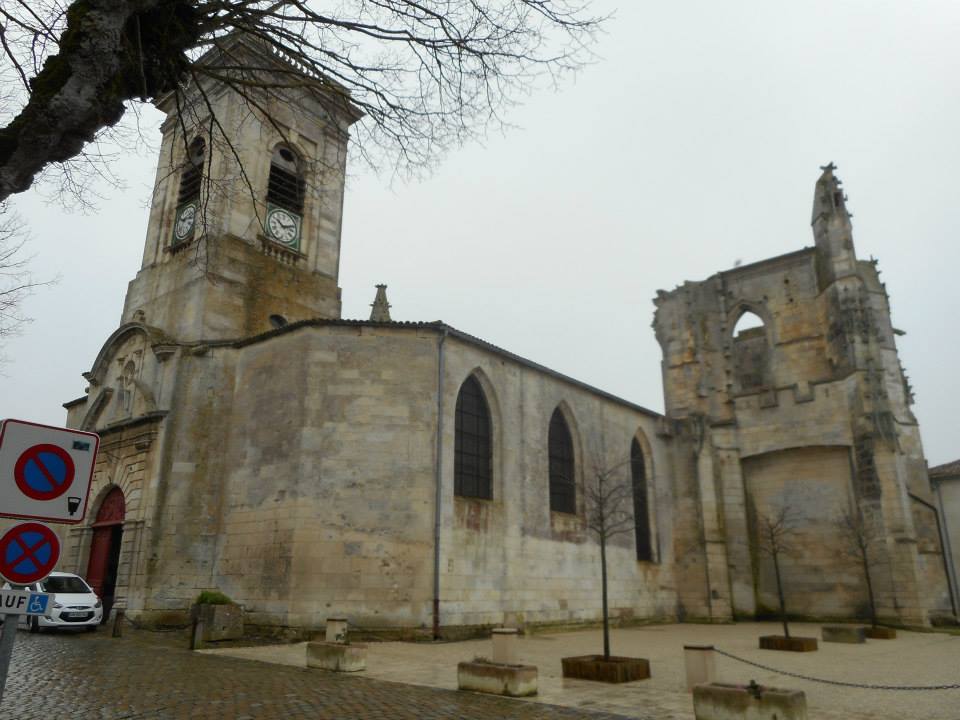Au XIe siècle, Guillaume Aigret, comte du Poitou, donne la paroisse au chapitre du Puy-en-Velay, qui la conserve jusqu’au XVIe siècle. Une nouvelle église est construite entre le XIVe et le XVe siècle, après avoir été ruinée durant la guerre de Cent-ans. La nouvelle église est mise à sac par les Huguenots en 1586. Les travaux de reconstruction débutent en 1629 mais l’église est encore ravagée en 1696 lors du bombardement de l’île par les navires anglais et hollandais. Le clocher s’effondre en 1774, avec une partie des voûtes. L’église est encore reconstruite mais inversée avec le chœur à l’ouest et la façade à l’est.De nombreux aménagements sont faits tout au long du XIXe siècle. L’église subit enfin un incendie en 1964.
Dans une niche de la façade se trouve une statue d’un évêque – sans doute saint Martin – en pierre. L’évêque est représenté barbu, mitré, tenant sa crosse dans la main gauche et faisant le geste de la bénédiction de la main droite. Une statue identique, mais colorée, se trouve au-dessus de l’autel dans l’église.
Les parties ancienne de l’église sont classées monument historique depuis le 29 décembre 1903, le reste de l’église étant inscrit le 29 décembre 1997. PA00105208


In the 11th century, Guillaume Aigret, Count of Poitou, gave the parish to the chapter of Puy-en-Velay, which kept it until the 16th century. A new church was built between the 14th and 15th centuries, after being ruined during the Hundred Years’ War. The new church was sacked by the Huguenots in 1586. Reconstruction work began in 1629, but the church was ravaged again in 1696 when the island was bombarded by English and Dutch ships. The bell tower collapsed in 1774, along with part of the vaults. The church was rebuilt again, but inverted, with the choir to the west and the façade to the east, and many changes were made throughout the 19th century. The church finally suffered a fire in 1964.
In a niche on the façade is a stone statue of a bishop – probably St Martin. The bishop is depicted with a beard, mitred, holding his crosier in his left hand and making the gesture of blessing with his right hand. An identical, but coloured, statue can be found above the altar in the church.
The older parts of the church have been listed as a historic monument since 29 December 1903, the rest of the church being listed on 29 December 1997. PA00105208

 "/>
"/>